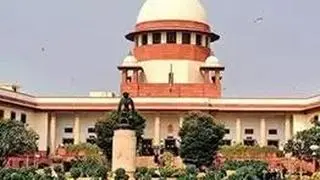Aam Adami Party’s promise to provide cheap electricity would mean the State Government will have to shoulder almost 10 times higher subsidy burden.
A back-of-the-envelope calculation shows that the Delhi Government spends about Rs 550 crore annually to subsidise electricity (Rs 1.20/unit for usage up to 200 units a month; 80 paise for using 201 and 400 units/ month). This would increase to nearly Rs 5,000 crore if the AAP-led Government reduces tariff by half.
AAP had promised to reduce electricity tariff by 50 per cent. At present, the Discoms buy electricity at an average of Rs 5.38 per unit, and average cost of retail sale is around Rs 6.55 per unit. While the actual tariff required is around Rs 7.4 per unit. The tariff is decided by Delhi Electricity Regulatory Commission.
Inadequate tariff led to un-recovered cost touching nearly Rs 19,505 crore.
“The question is who will foot the bill for cheaper electricity? Discoms cannot sell at loss and power producers will not reduce charges, as their cost of generation has also increased,” said a power industry official.
Since 2002, when electricity distribution was handed over to private utilities, the cost of buying power from generating stations has increased by around 300 per cent from Rs 1.42/unit in 2002-03 to Rs 5.38 in 2012-13. During the same period, electricity rates at the retail-end rose 70 per cent.
The cost of electricity generation is primarily on account of hike in fuel prices of coal and gas. It is coupled with higher operations and maintenance cost.
The Discoms claim to be surviving on a thin line because they are able to cut down the losses (theft, transmission, efficiency) from 57 per cent in 2002 to 17 per cent now.
Rejig subsidy “Kejriwal-led Government may rejig the current subsidy slabs without increasing the overall subsidy outgo, which would result in 50 per cent drop in tariffs for select consumers,” said an industry observer. The cost of electricity comprise of power purchase cost from stations (80 per cent), operation and maintenance cost (10 per cent) and financial cost including depreciation, interest and taxes (10 per cent).
Delhi, which has a demand of more than 5,000 MW, buys power on long-term agreements from Government-owned power producers such as NTPC (70 per cent), NHPC and DVC, among others.
The national capital has about 43 lakh electricity customers. Of this, two-third is serviced by Reliance Group utilities — BSES Yamuna Power Ltd and BSES Rajdhani Power Ltd. The remaining is serviced by Tata Group company Tata Power Delhi Distribution Ltd.








Comments
Comments have to be in English, and in full sentences. They cannot be abusive or personal. Please abide by our community guidelines for posting your comments.
We have migrated to a new commenting platform. If you are already a registered user of TheHindu Businessline and logged in, you may continue to engage with our articles. If you do not have an account please register and login to post comments. Users can access their older comments by logging into their accounts on Vuukle.